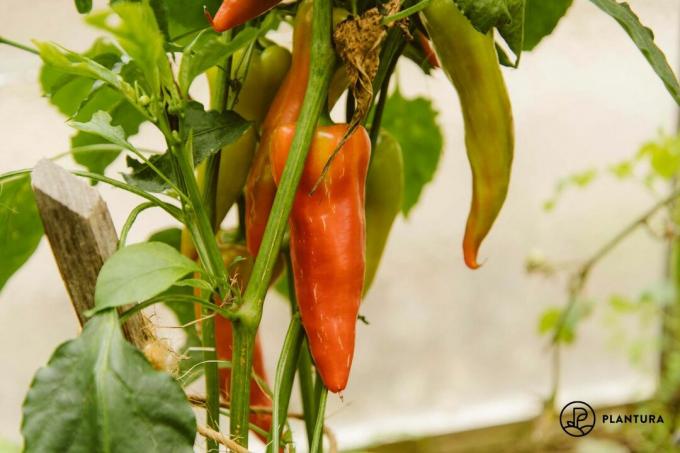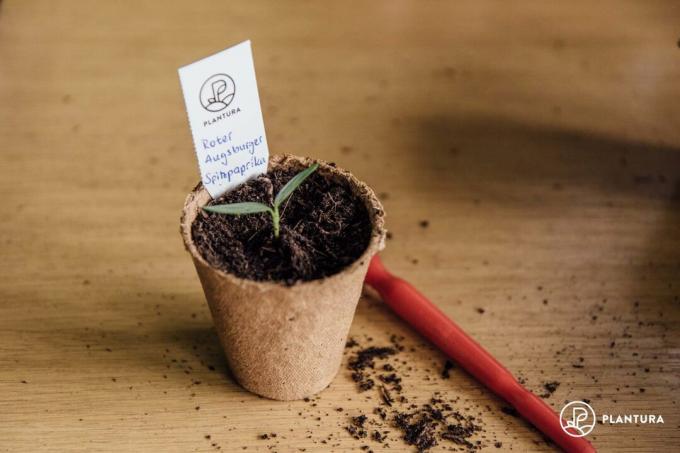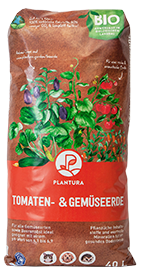With its full and fresh taste, the pointed pepper goes well with a variety of dishes. Incidentally, the pointed pepper does not behave so differently in the garden than the “normal” block pepper.

Like the better-known block peppers, pointed peppers belong to the plant species Capsicum annum. Peppers not only have a sensationally high content of vitamin C, pointed varieties often also have a fuller flavor than the more well-known blocky peppers. With a variety of different flavors, there is something for every taste. We explain what makes a pepper a pointed pepper, how to grow peppers - and what delicious varieties there are.
contents
- Pointed peppers: origin and characteristics
- The best varieties of pointed peppers
- Planting pointed peppers: location, soil and Co.
- The right care
- harvest and use
Pointed peppers: origin and characteristics
As the name suggests, the pointed pepper is a pointed, narrow pepper that once again proves the great variety of shapes and colors of this plant species. Different varieties are called pointed peppers, for example Romanian, Turkish, Bulgarian and Hungarian pointed peppers with a mild or hot taste. Originally from Central and South America, the nightshade plant has a color palette of green, red, yellow, white and even purple pointed peppers. Here, as with the block pepper, the red fruit contains the highest vitamin C content. It also contains large amounts of potassium, magnesium, zinc and calcium as well as vitamins A and B.

What is the difference between pointed peppers and paprika? Pointed peppers are special types of peppers, for example the Capi type and Cece type, which are commonly called waxy peppers. The difference to the “normal” peppers for us is that they have a pointed shape. Pepperoni can also be counted among the pointed peppers. In Switzerland, pointed and mild peppers are called Peperoni.

The best varieties of pointed peppers
There are many different types of pointed peppers, which differ in their taste, color and cultivation requirements. Below we have compiled a selection of the most popular varieties:
- ‘agio‘: Hungarian paprika variety, orange-red to red ripe fruits, outdoor cultivation possible, resistant to tobacco and tomato mosaic virus, harvest time: August to September.
- ‘atris‘ or ‘Bullhorn peppers': Red, thick-fleshed fruits, sweet-aromatic, juicy,
Harvest time: July to September.
- ‘Daisy': Orange-red, very sweet snack peppers, few seeds, high-yield, robust,
Harvest time: July to September.
- ‘luigi‘: Italian snack peppers, sweet fruits, few seeds, robust and high-yielding, harvest time: July to October.
- ‘Red Augsburger': Tried and tested, very robust variety, outdoor cultivation possible,
Harvest time: From July.
- ‘Tuscany': Bright red, sweet and aromatic fruits, harvest time: June to October, well suited for container cultivation.
- ‘pepperoni‘: Green, yellow, orange and red fruits when fully ripe, fiery and hot, harvest time: August to October.

Tip: Store-bought pointed peppers are often extremely heat-loving varieties that thrive best in Mediterranean regions. Growing plants for the garden from the seeds of these peppers is hardly promising, because the heat-loving varieties need a longer vegetation period and more heat and light to mature well be able. In the greenhouse and with the preculture in the house it is definitely worth a try. There are better chances if you buy pointed peppers regionally or at least from Germany - because German growers naturally rely on adapted varieties.
Planting pointed peppers: location, soil and Co.
Since the pointed pepper originally comes from a warm area, it should be given a sunny and wind-protected location. Pointed peppers have a very high heat requirement in order to be able to fully ripen within the shorter German vegetation period. The optimal humidity for pointed peppers is 65 to 80%. Thus, the cultivation is particularly suitable for greenhouses. Small greenhouses, mini tunnels or similar are also possible. There are also outdoor varieties, these only thrive slightly less productively than greenhouse varieties.
Pointed peppers need humus-rich, loose and nutrient-rich soil in order to be able to grow ideally. When planting, a well pre-fertilized soil such as ours is particularly suitable Plantura organic tomato & vegetable soil, so that the plant has enough nutrients available right from the start.

Plantura organic tomato & vegetable soil
Organic, peat-free & climate-friendly:
For all types of vegetables and berries,
ensures a rich and aromatic harvest, harmless to humans and animals
You can take the seeds for growing pointed peppers yourself from suitable fruits – or you can turn to a specialized seed dealer. Garden centers usually do not have a satisfactory selection for die-hard pepper fans.
A sowing depth of about 1 cm is sufficient for sowing pointed peppers. It is ideal if you cover the flower pot with the well-moist soil with a plastic film for the first few days until the seed has germinated. This means that the temperature fluctuates less and the humidity remains constant. After about 2 weeks, the first tender plants will appear. It is recommended to leave the pointed pepper seedlings in the seed container for about 4 weeks and then transplant them into a larger pot. In addition, the pointed pepper is very sensitive to cold and should therefore not be planted outside until mid-May at the earliest - after the ice saints.
Due to the high nutrient requirements of pointed peppers, it is advisable to mulch with compost, for example. Alternatively, cover the soil with other organic mulch material or black mulch film and plant the peppers in small slots. This is to keep moisture in the soil and maintain an optimal, warm temperature. Cultivation as a tub culture on the balcony is also possible with pointed peppers, and with good care is often even better than outdoor cultivation.

The right care
Optimal care during youth development ensures more leaf mass and thus a higher yield. Since the plant often has to bear heavy fruit, it is advisable to support it - for example with a bamboo stick. Mounding up the plants is suitable for even more stability and the development of additional roots.
When watering, care should be taken to ensure that the top 2 cm has dried out at the latest. Waterlogging should be avoided at all costs. In the youth phase of the plant, however, even soil moisture is very important - this requires a little finesse. In general, it can be said that peppers require more water than tomato plants. In order to keep the air humidity optimally high, the leaves and the bed surface around the peppers can be moistened daily. Dry air and soil cause flowers and fruit to fall.
Proper and regular fertilization is very important for peppers, as they are heavy feeders. The supply of potassium and phosphorus is particularly important during the formation of the flower buds. Depending on the type of cultivation, either granular or liquid fertilizer can be used as fertilizer. A fertilizer like ours Plantura Organic Tomato & Vegetable Fertilizer supplies the plant with sufficient potassium for the best fruit quality and contributes to lush fruit formation.

Tip: So that the plant later bears plenty of fruit, you should break out the king blossom - i.e. the first blossom. This forms between the main shoot and the first side shoot. This stimulates the plant to produce many new flowers, from which a large number of fruits can form over time.
harvest and use
As soon as the pointed pepper has reached its variety-specific color, it is ready for harvest. If you harvest the pointed peppers a little earlier, they can still ripen on a sunny windowsill, for example. Depending on the variety, growing date or whether the plant was grown in a greenhouse, as a tub culture or outdoors, the harvest time can vary between July and October. If you carefully remove the peppers, they can be harvested continuously. It is best to cut off the fruit above the base of the stem with a sharp knife or scissors. Since the pointed pepper has only a few calories, it is ideal for light cooking. Above all, pointed peppers are well suited for grilling and they taste delicious when filled with rice or meat. This colorful vegetable enhances the taste and color of salads, soups and stews.

Is pointed pepper hot? Most peppers contain capsaicin. This substance is responsible for the spiciness of the fruit: the more of it it contains, the hotter the pepper. In general, most types of pointed peppers are mild - if you count chili peppers as pointed peppers, there are of course also hot pointed peppers.
The vitamin bomb paprika is really available in a large variety of shapes and colors. For example, the one that looks like tomato but tastes like peppers tomato peppers confirms this.
...and receive concentrated plant knowledge and inspiration directly in your e-mail inbox every Sunday!

